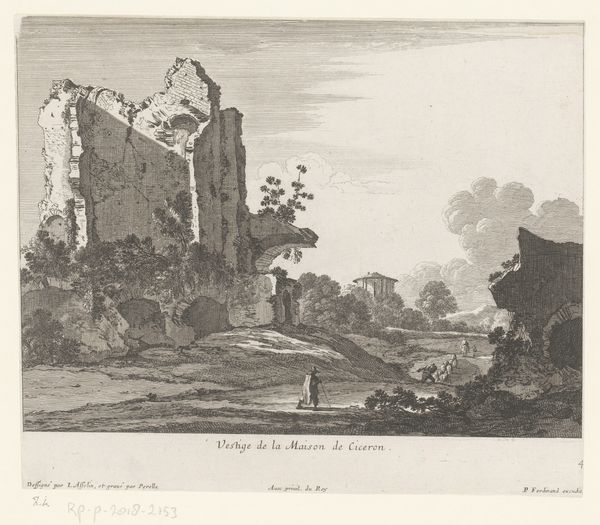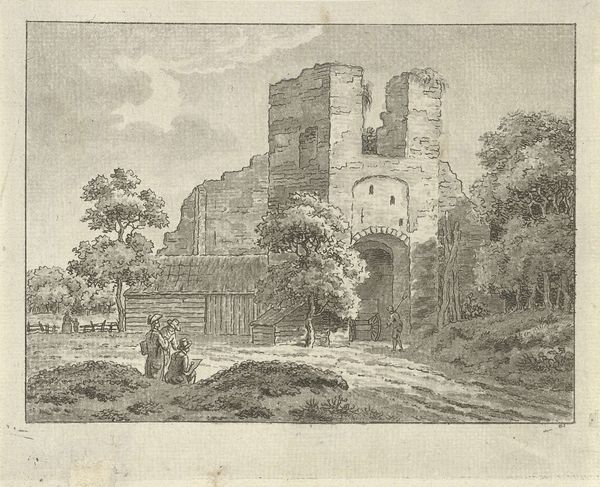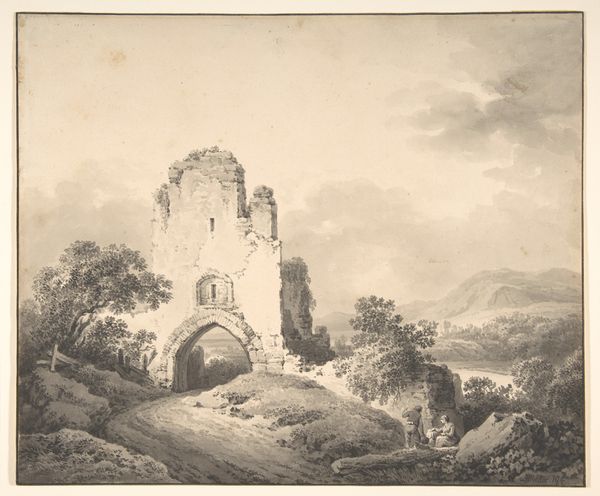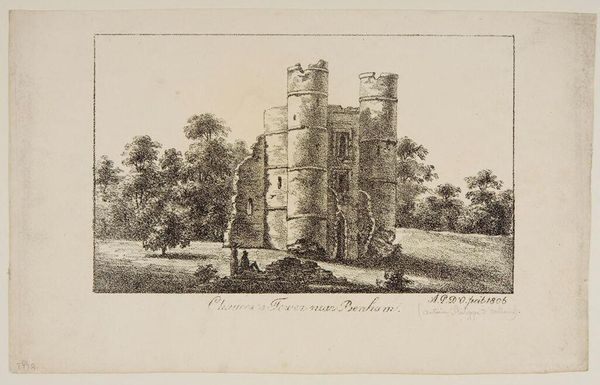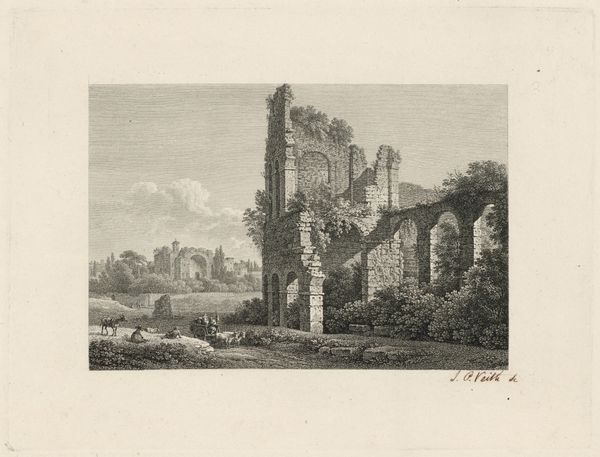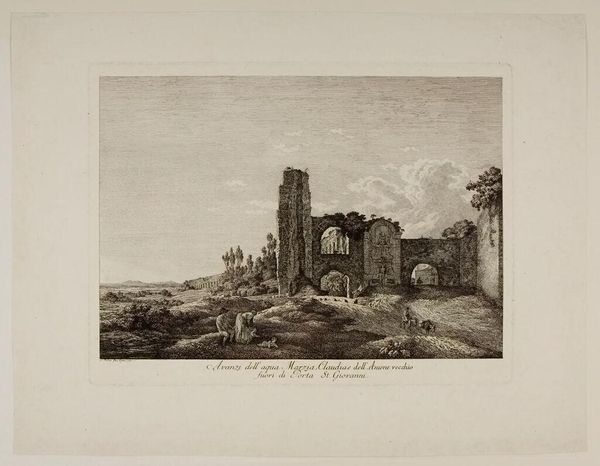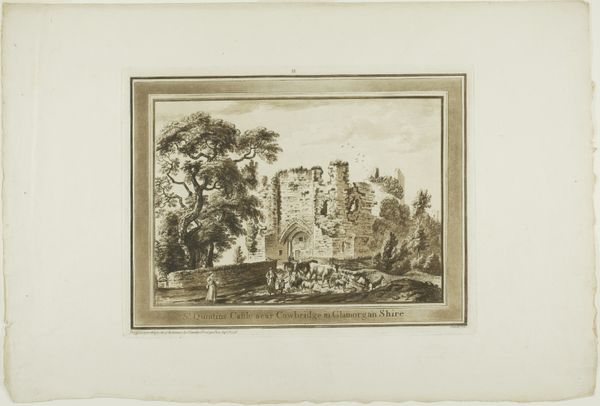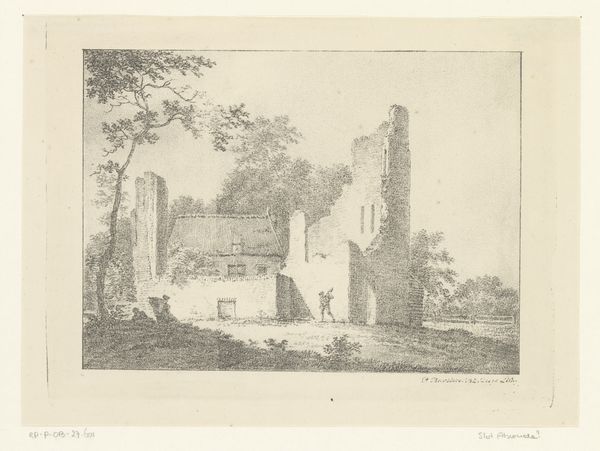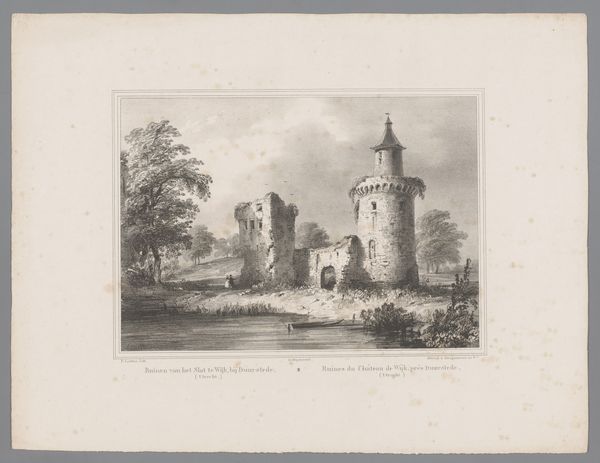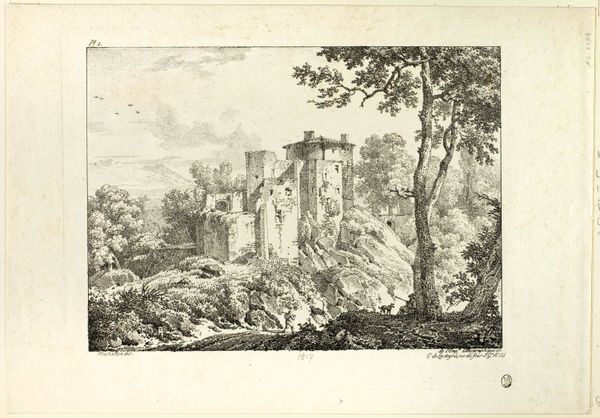
drawing, print, etching, paper
#
drawing
# print
#
etching
#
landscape
#
paper
#
romanticism
#
history-painting
Dimensions: 108 × 163 mm (image); 144 × 198 mm (sheet)
Copyright: Public Domain
Curator: What a melancholy scene. I find myself drawn to the interplay of light and shadow across these crumbling walls. Editor: Indeed, there's a certain atmospheric quality. We are looking at an etching, a print, entitled "Italianate Landscape." Philipp Veith made it sometime between 1822 and 1824. Consider how the lines, etched into a metal plate then transferred onto this paper, convey the texture and decay of stone. Curator: The ruined architecture certainly speaks to the Romantic fascination with the past. See how these Roman ruins dwarf the figures walking below, mere travelers in a land of bygone empires? It’s more than a picture of decay, it's about the ephemeral nature of power. Editor: Precisely. And from a technical standpoint, look closely at how Veith used the etching process to capture light. Those figures almost feel added-on; they have a strange and clunky rendering when compared to the ruin, no? I am interested in the industrial aspect, how these materials speak to a transition in ways of image making at the time. Curator: Yes, notice the dark areas. They were created by laying down multiple lines, so many, that it darkens the atmosphere. It's the visual manifestation of Romanticism's fascination with ruins as potent symbols. Think of Caspar David Friedrich, you know. The implication of grand narratives gone awry. Editor: What narratives are explicitly communicated through this piece’s consumption? Was there ever something made in that old building? Those things interest me more, frankly. This aestheticization of history feels almost irresponsible when removed from labor’s context. Curator: A fair point, it's possible. Perhaps we impose meanings upon it, as generations have, drawn to the ruins, which serve as mirrors for our own reflections. Editor: Well said. Looking at the composition of lines I think that, even today, this technique reminds of art and manufacturing becoming inseparable things. Curator: It is interesting how its imagery makes us wonder whether they are the symbol of permanence or passing things. Editor: Agreed. Thank you for lending your perspective!
Comments
No comments
Be the first to comment and join the conversation on the ultimate creative platform.
